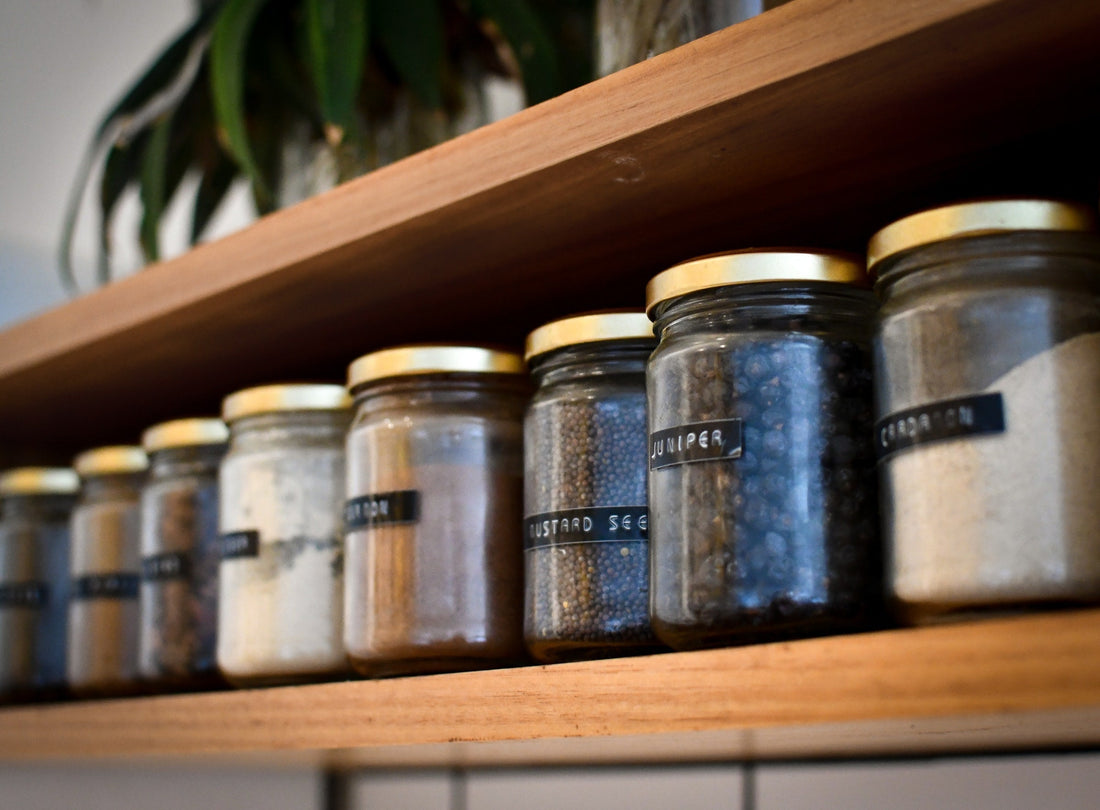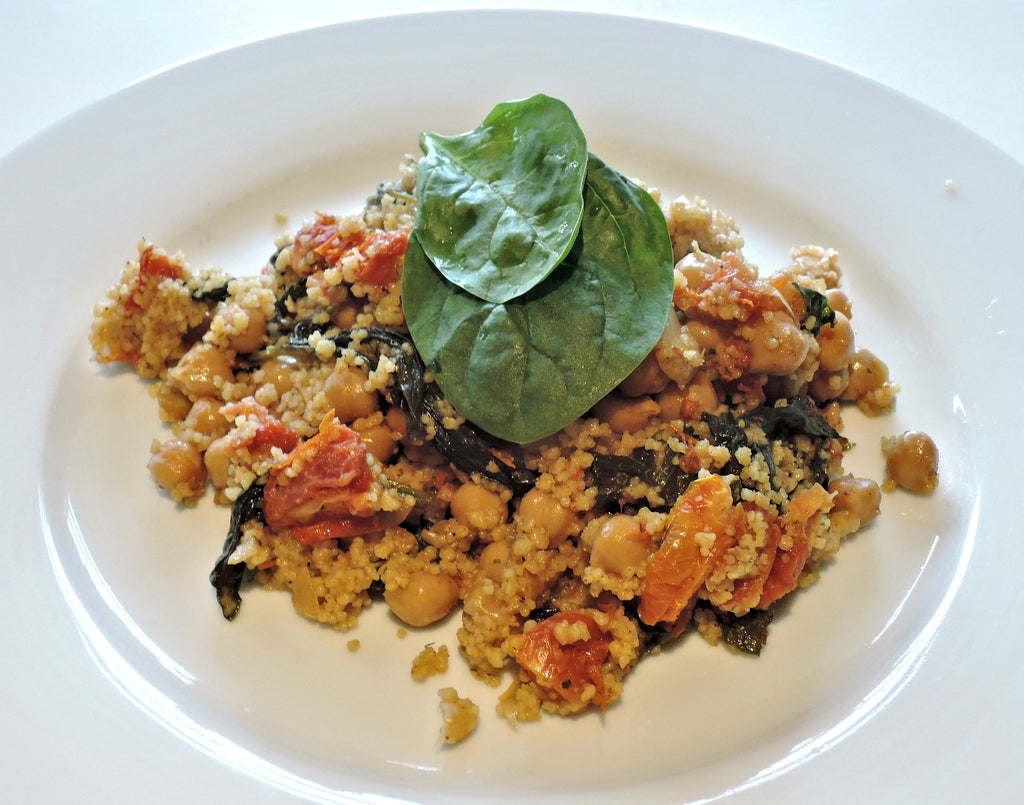
In the bad old days of post-war British cooking, we didn’t know much about spices as a country. Perhaps unfairly, we developed a bit of a reputation around the world for culinary misadventure — think aspic, jellied eels and meat-and-two-veg.
These days, however, there’s something of a grassroots food revolution underway in the UK. The popularity of vegetarianism and veganism is growing and small businesses are bringing exciting and adventurous food to the masses up and down the country. The best part? Seasoning companies (like us!) mean anybody can stock their kitchen with quality herbs and spices.
With that said, it can be difficult to know where to start, and what exactly goes with what. The world of online recipes is a jungle, and old-style recipe books can recommend hard-to-source ingredients. Even trial-and-error takes time, and may cost you a few taste buds!
That’s where we come in. This is our handy starter’s guide to seasoning your food with spices.
How can spices add flavor to your cooking?

Here at Cole and Mason, we think cooking is like making music. Everybody enjoys hearing somebody play the guitar and sing well, just like most of us enjoy a hot baked potato or freshly scrambled eggs. Next, you might add in a drummer and a bassist — that’s your salt and pepper!
If you had to listen to the same band play the same few songs all the time, however, you might get a little bored. Luckily, there’s a whole orchestra’s worth of instruments waiting on the sidelines for their chance to join in and play their parts on your plate.
That’s what seasoning is, and how it works — by adding new flavors to recipes you already enjoy, you can make them even tastier and bring out the underlying qualities of your ingredients.
How much should you use?

Nobody likes over spiced food — eating a heavily-spiced meal can feel like munching through a plate of potpourri or a bouquet of flowers. There’s also the risk that your dinner companions don’t have the same tolerance for heat as you do, which never fails to cause a stir.
On the other hand, however, using no spices at all can make a dish bland and unenjoyable. It’s about striking a happy medium.
First off, when you’re using spices it’s important to retain control over exactly how the spice gets into the mix in the first place. Freehand-shaking a tub of chili powder over your mixture is tempting fate — always use your hand, a spoon or a specialized mill or grinder. This should prevent any accidental over-spicing.
Second, remember that spicing food usually works in terms of teaspoons, not tablespoons. Spices in themselves are blunt objects, ones that work best when used in tandem with your ingredients.
Thus, a few teaspoons of allspice will transform a moussaka, a few teaspoons of paprika will liven up a Puttanesca sauce, and a teaspoon of ginger ties together a stir fry — but overdoing it with any of these three can make a perfectly good dinner into a gritty, smelly mulch.
Finally, once you’re feeling a little more confident, you might flick through some cooking programs to see how the experts do it. Most chefs use a lot of seasoning, but remember — they usually know exactly what they’re doing! You’ll probably find that some spices are more forgiving than others.
The rest is down to you and your taste buds!
Adding spices to your everyday meals
Once you start adding spices to your meals, it’s usually tricky to go back to plainer foods. And why shouldn’t you enjoy yourself? Spices don’t contain any extra calories to speak of, they aren’t too expensive and they can even have various health benefits.
Spicing up your everyday meals can be as simple as adding a sprinkle of cinnamon to your morning porridge, a tot of pepper to your lunchtime pasta box or a few cloves into your evening rice as it cooks.
How to add flavor to rice

Anyone who’s ever laboured in indecision over a takeaway menu will know just how many kinds of rice can be prepared with the right techniques and spices. For now, let’s keep it simple.
A culinary trick that’s easier to master than you might think is making striking, aromatic yellow rice. All it takes is a few teaspoons of turmeric stirred into the pan or rice cooker before the rice begins to cook. Again, take care not to overdo it — but if you’re feeling even more adventurous, you can throw in a pinch of salt or a few cloves. Otherwise, white rice can be jazzed up with thyme, pepper or even a pinch of stock.
When it comes to Indian-spiced rice, try adding a touch of cumin, cardamom, garam masala and bay leaves to create an authentic side to your homemade curry.
How to add flavor to pasta
Pasta works best when it accompanies a flavorsome sauce, although adding a sprinkle of salt and the tiniest drop of olive oil to a boiling pot can enhance its natural flavor.
When it comes to pasta sauce, you can’t go wrong with classic Italian herbs like basil, oregano and sage. In addition to these, however, you can deploy a few popular spices; paprika, chili powder, capers and pepper can add real zing to sauces.
How to add flavor to couscous

Couscous is a completely different beast to rice and pasta, with a very different culinary heritage. Originating in the North African region, the Maghreb, the principle spices used with couscous are salt, pepper, ginger and turmeric.
North Africa was once a hub for the spice trade, however, so the list runs on: combinations of saffron, paprika, cumin and cinnamon, nutmeg and cardamom are also a great way to flavor your couscous. Experiment with different ones and see what works for you.
Spices can add a whole new dimension to your cooking. Once you get into it, there’s no turning back! Why not treat yourself to a dedicated spice carousel, or even a pestle and mortar for the freshest flavor possible?

